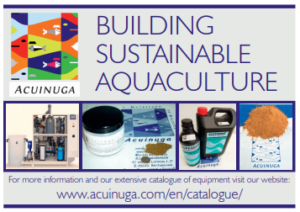Spike in demand
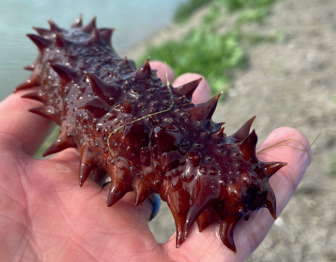
Sea cucumbers may not look too appetising to the Western consumer, but their potential in the export market is huge, Robert Outram finds
In a series of man-made lagoons in the Bahía de Cádiz Natural Park in southern Spain, a species is being farmed that is destined to be consumed on the other side of the world.
Guatizamar, the company operating the farm at San Ramón de Chiclana de la Frontera, near Cádiz, is still at the developmental stage and is raising funds for the investment needed to carry out its first commercial harvest.
Even so, its Chief Executive, Antonio Fernandez-Perez, is confident that Guatizamar has already created a superior product that will find ready buyers. The market? China and the Chinese diaspora, plus Japan. The product? Sea cucumbers.
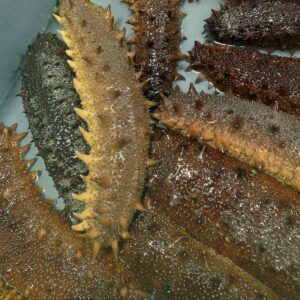
Holothurias
Perez is also CEO at Sayanes Mar SL, a frozen seafood import and export company based in Vigo, Galicia, Spain’s biggest fishing port. He explains how he came to be farming a seafood species that most Europeans have not even heard of, let alone tasted. “I realised that the Chinese are crazy about sea cucumbers,” he says, “but it was impossible to sell to them in a legal and sustainable way, if not done through aquaculture”.
Sea cucumbers don’t have a strong taste, but they are popular in Asian cuisine as a healthy ingredient – or even for their medicinal properties. They are relatively high in protein and low in fat, and contain a variety of nutrients, especially vitamins B2 (riboflavin) and B3 (niacin). They are also a rich source of chondroitin sulphate, commonly used for arthritis.
In traditional Chinese medicine, sea cucumbers are believed to have anti-cancer and anti-diabetes properties, and a remedy for fatigue, impotence, constipation, frequent urination and joint pain.
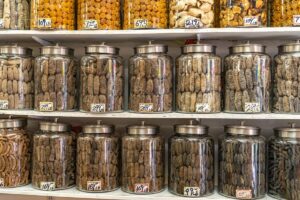
Dried sea cucumbers
Even the sea cucumber’s guts can be dried to make a powder as a medicinal food additive. Creams, tinctures, oils and cosmetics infused with sea cucumber extract, as well as oral sea cucumber supplements, are also popular in China.
Most of the sea cucumbers Chinese consumers want to eat can no longer be legally harvested, however, at least from abroad. More than 70% of the global sea cucumber population is considered to be over-exploited or depleted, with local extinction of some stocks.
Sea cucumbers can be dried and easily transported, however, and there are many illegal channels to get them into China. In Cape Verde, Spain, Morocco and many other countries, illegal harvesting is threatening sea cucumber numbers.
This is a problem not only for the seafood industry but for the ocean environment. Sea cucumbers play an important role in turning organic detritus in the seabed into nutrients that can sustain other forms of life. As Perez puts it: “Sea cucumbers are natural vacuum cleaners of the oceans.”
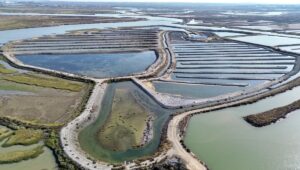
Guatizamar
farm from the air
Aquaculture as a solution
One way to tackle the problem of over-fishing is, of course, aquaculture. Sea cucumber farming began in China and Japan in the 1980s, mainly centred on the species Apostichopus japonicus. Guatizamar estimates there are currently less than three species cultivated on a large scale in different countries including Australia, China, Japan and Madagascar.
Seeing an opportunity, Perez worked with the University of the Algarve to research European species of sea cucumbers to see which would be most suitable to farm in Spain – and which would be attractive for the Asian market. As he explains, there are many species of sea cucumbers, which are all different from each other.
He says: “We were looking for the one which is most ‘good looking’ for the Chinese market.” The species selected was Holothuria arguinensis, native to Portugal, southern Spain, the Canary Islands and Morocco, where it is particularly endangered in Morocco. As well as being appropriate for the region, Holothuria arguinensis was seen as a good candidate for the Chinese market – not only is it quite large, with a comparatively thick body even when dried, but its spikes are seen as attractive by consumers.
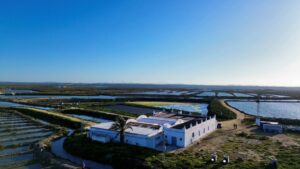
The farm facilities at Guatizamar
They grew the first larvae in 2014, after getting over the first hurdle: bureaucracy. As Perez explains: “Initially, it was forbidden to sell or harvest Holothuria in Spain, as an endangered species.
I had to talk to Madrid many times to get permission.”
Guatizamar’s farm is based in a large nature reserve and the water in its ponds, which is regularly replenished by the tides, is of exceptional quality. The use of antibiotics is strictly forbidden in the reserve, but so far pathogens have not proved to be a problem.
Early stage larvae are grown in the hatchery with 120 by 500-litre circular tanks. Then they are moved to larger tanks for the settlement stage.
In the first three weeks, the larvae float, then the juveniles develop suckers or feet, which they use to attach to surfaces. When they have grown larger, they are transferred to a series of outdoor ponds fed by seawater, passed through a biofilter, which does not allow them to escape. In the final stage, the adults are fattened up in a larger pond prior to harvest.
The larvae are fed on microalgae supplied by Acuinuga and in the settlement stage, the juveniles eat algae-based feed including PT Aqua’s AlgaMac.
In the ponds, there are natural nutrients for the sea cucumbers to feed on, but to ensure faster growth this is supplemented by ulva – the seaweed also known as sea lettuce. The Holothuria do not eat the fresh seaweed, but feed on the sediment its detritus creates.
At harvest time, the team simply have to empty the pond and collect the sea cucumbers. As Perez puts it: “You can collect them as if they were strawberries.”
They are gutted, boiled and dried, with the final product only 10% of the sea cucumber’s live weight.
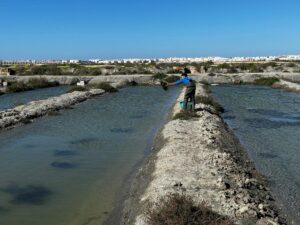
Throwing algae into a
pond at Guatizamar
Next steps
Two key challenges remain, Perez says: first, how to standardise growth and speed it up; and secondly, how to achieve year-round production. As he explains: “Holothuria have gonads only in spring, but we would like to be able to achieve reproduction all year round. We need to adapt the laboratories to allow this.”
A third challenge is raising funds for the next stage. Perez says: “We are talking to investors in the UK and US – we are looking for a partner to help us grow. We have a five- to 10-year advantage over potential competitors and I don’t want that advantage to fade.”
Guatizamar is looking for around €3m (£2.6m) to scale up and build a dedicated processing line.
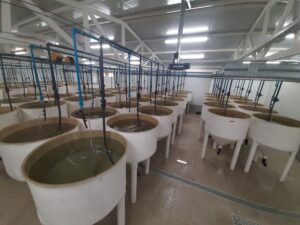
Pelagic larvae area
As a dried product, sea cucumbers for medicinal or culinary use are comparatively cheap to transport, even to China, and Perez believes there are also potential customers in countries such as Malaysia, Singapore and Japan, not to mention the sizeable Chinese communities in the US, Canada and UK.
Guatizamar’s sea cucumbers have the advantage of being legal and, compared to many farms in Asia, the fact they are grown without antibiotics and in less polluted seas is another selling point.
Don’t expect to find sea cucumber on your paella any time soon, but this new, sustainable seafood export could prove to be a winner.

